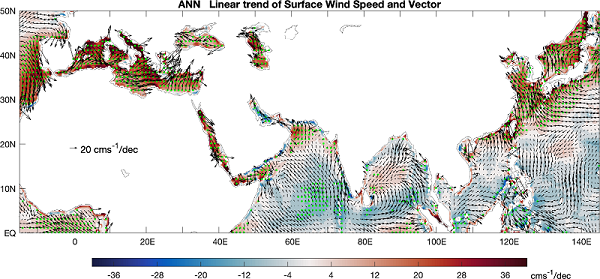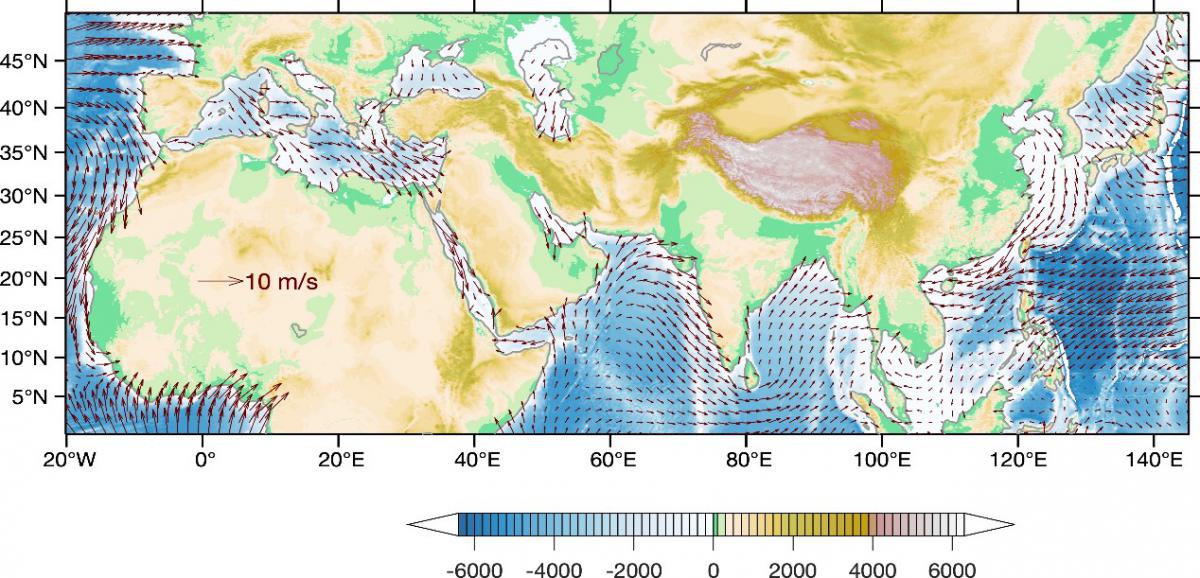Emerging Pattern of Wind Change over the Eurasian Marginal Seas Revealed by Three Decades of Satellite Ocean-Surface Wind Observations

Figure 1. Linear trends of surface winds (1988 – 2018)
Ocean surface winds play an important role in many oceanic and atmospheric processes, such as generating marine waves, driving ocean general circulation, and modulating air-sea heat, moisture, and gas fluxes. Meanwhile, winds over the marginal seas surrounding the Eurasian continent (Fig. 2) warrant special attention as ocean temperatures in these seas have increased at 2-3 times the rate of the global-ocean average.

Figure 1. The Eurasian marginal seas and regional mean surface winds
A recent study led by Dr. Lisan Yu, member of CLIVAR/IOC-GOOS Indian Ocean Region Panel, provides the first full characterization of decadal changes (1988-2018) of surface winds over 10 marginal seas along the Eurasian continent using a newly merged satellite vector wind data record. It is found that surface winds have strengthened over the marginal seas in the subtropical latitudes but slackened over the seas influenced by the Asian monsoon circulation (Figs. 1 & 3). The varying relationship between the wind and ocean-temperature suggests that the response of the marginal seas to the global warming may result from complex interactions between the atmosphere, ocean, and land; and this complexity demonstrates the importance of long-term satellite data records in identifying and understanding the climate change and impacts at a regional scale.

Figure 3. Linear trends averaged over each marginal sea
********************************************
Yu, L. Emerging Pattern of Wind Change over the Eurasian Marginal Seas Revealed by Three Decades of Satellite Ocean-Surface Wind Observations. Remote Sens. 2021, 13, 1707. https://doi.org/10.3390/rs13091707














Add new comment